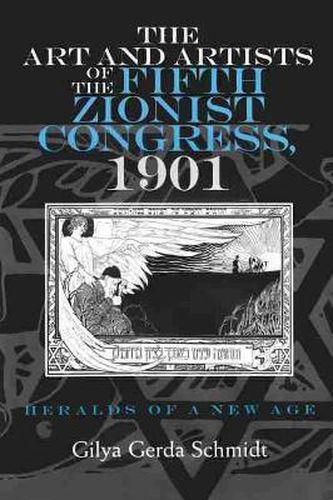Readings Newsletter
Become a Readings Member to make your shopping experience even easier.
Sign in or sign up for free!
You’re not far away from qualifying for FREE standard shipping within Australia
You’ve qualified for FREE standard shipping within Australia
The cart is loading…






Martin Buber and friends successfully lobbied the congress for inclusion of cultural Zionism into the official agenda of the Zionist organization, resulting in the establishment of the Bezalel Art Institute in Jerusalem in 1905. In the first book of its kind, Gilya Gerda Schmidt places this art exhibition in the context of political Zionism as well as anti-Semitism. Jews had been denied the opportunity to be creative, and religious Zionists feared that Jewish culture would usurp religion within the Zionist movement. Hermann Struck, an artist and Orthodox Jew, became a founding member of the religious Zionist Party, further supporting Buber’s assertion that culture and religion were not at odds. The forty-eight works of art in the exhibition were created by eleven artists, all but two of whom were famous in their lifetime. Until now, their works had been largely forgotten. In the last decade, contributing artistsEphraim Lilien, Lesser Ury, Jozef Israels, Struck, and Maurycy Gottliebhave enjoyed a revival of their work.
$9.00 standard shipping within Australia
FREE standard shipping within Australia for orders over $100.00
Express & International shipping calculated at checkout
Martin Buber and friends successfully lobbied the congress for inclusion of cultural Zionism into the official agenda of the Zionist organization, resulting in the establishment of the Bezalel Art Institute in Jerusalem in 1905. In the first book of its kind, Gilya Gerda Schmidt places this art exhibition in the context of political Zionism as well as anti-Semitism. Jews had been denied the opportunity to be creative, and religious Zionists feared that Jewish culture would usurp religion within the Zionist movement. Hermann Struck, an artist and Orthodox Jew, became a founding member of the religious Zionist Party, further supporting Buber’s assertion that culture and religion were not at odds. The forty-eight works of art in the exhibition were created by eleven artists, all but two of whom were famous in their lifetime. Until now, their works had been largely forgotten. In the last decade, contributing artistsEphraim Lilien, Lesser Ury, Jozef Israels, Struck, and Maurycy Gottliebhave enjoyed a revival of their work.